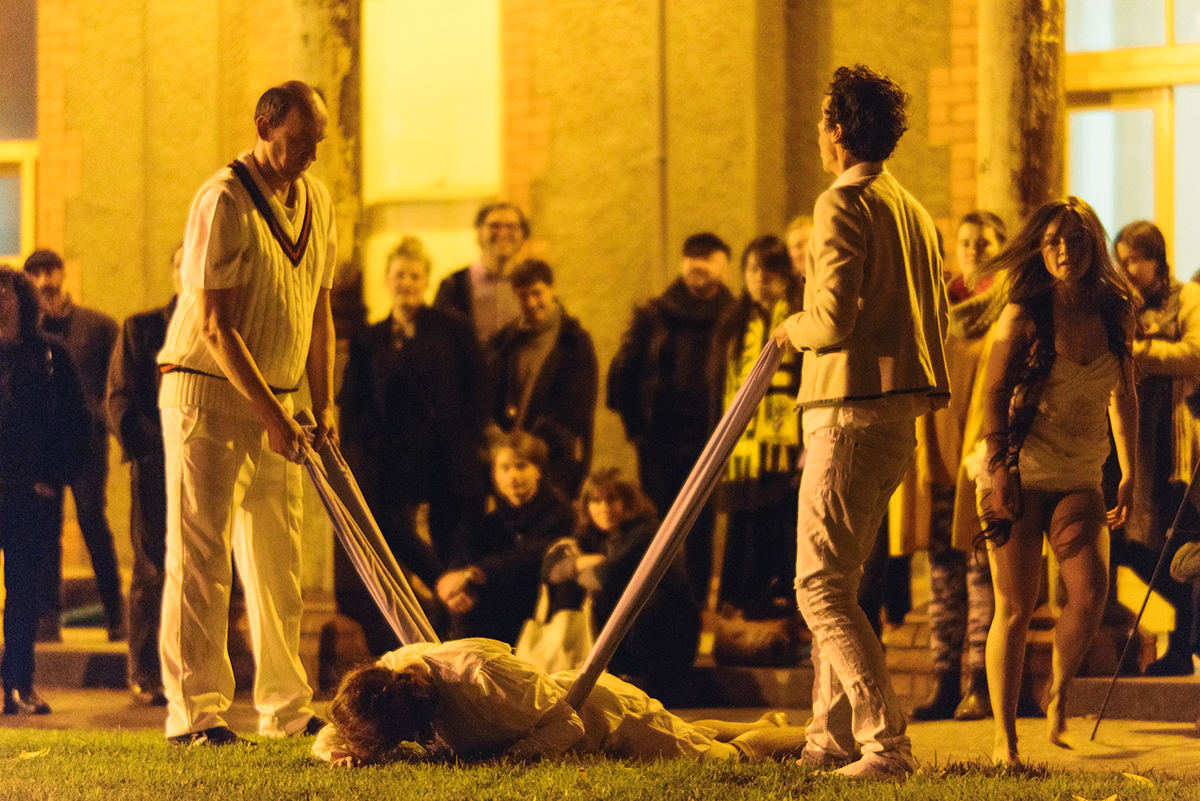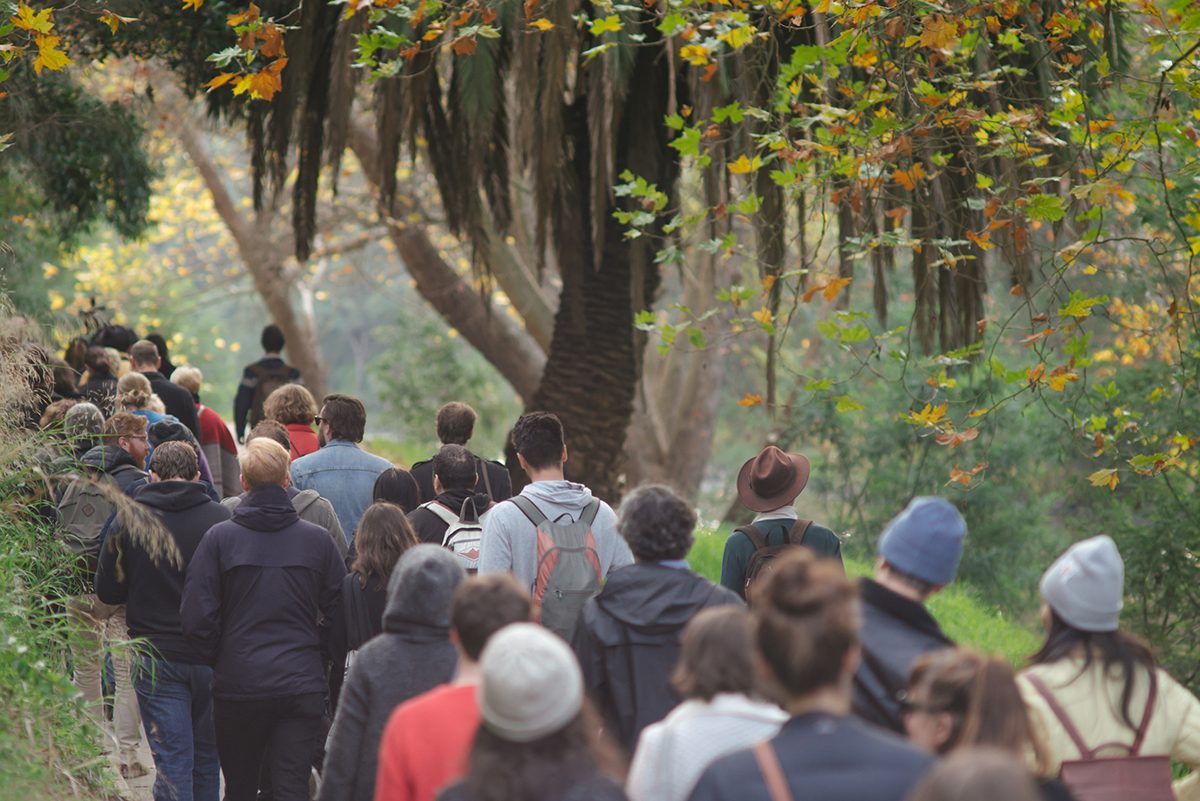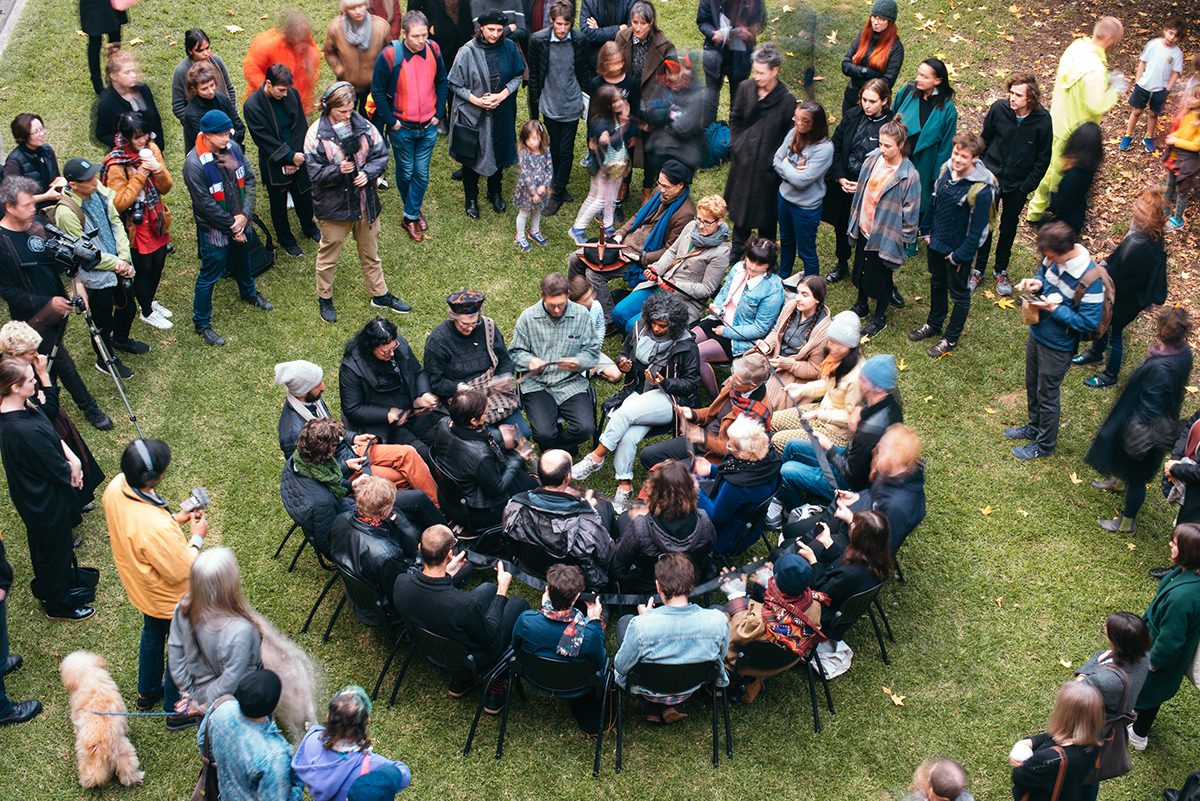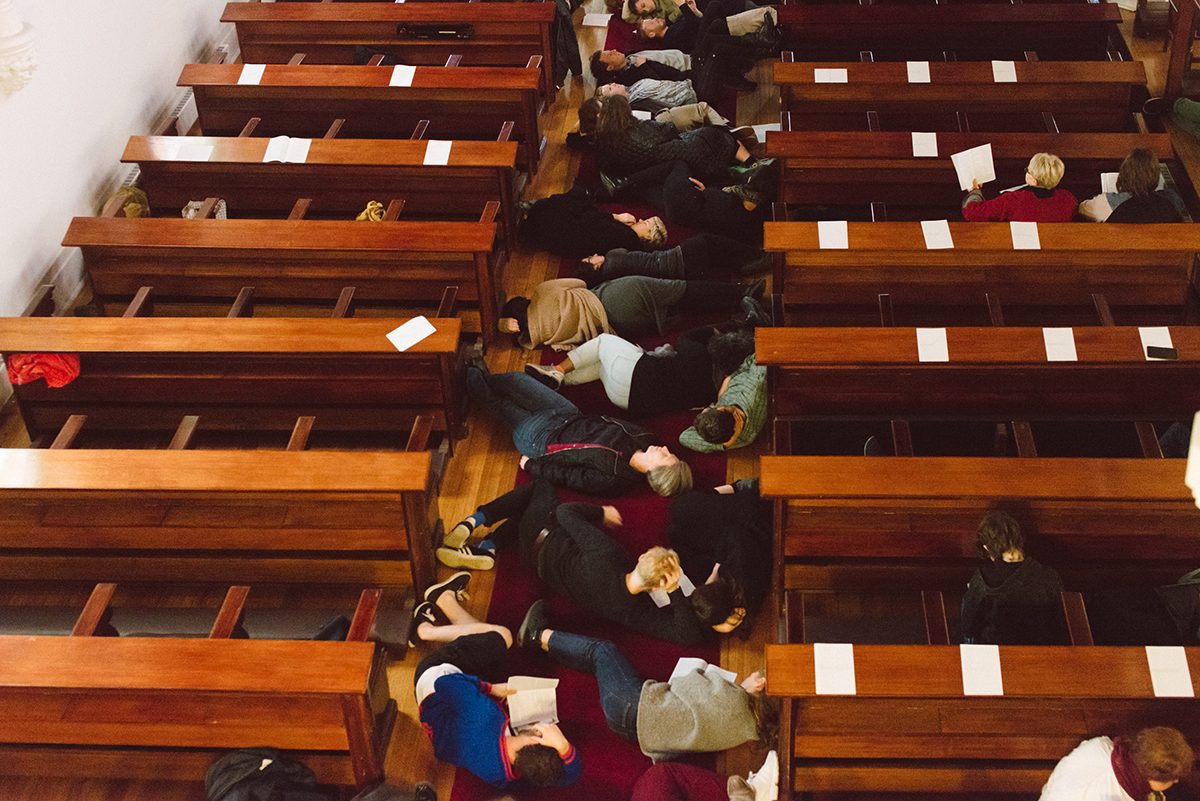
Polyphonic Social: sacred & other resonances
There is a knocking coming from the balcony — a rattling, the sound of footsteps, scuffling. It’s a Saturday night at Abbotsford Convent and we are seated in the dark in the pews of the Good Shepherd Chapel for Polyphonic Social, presented by Liquid Architecture. Five minutes earlier, the space was filled with the gloriously dissonant refrains of The Melbourne Georgian Choir. Now the chapel is quiet except for the creaking of chairs, and the knocking. The audience waits. The footsteps grow closer. A hunched figure emerges from the stairwell and scuttles down the aisle, tapping on the pews and floorboards until she reaches the church organ. Here she takes a seat, draws out the clatter as she opens the organ cover and, after a moment’s pause, fills the chapel with a long, low drone.
This magnetic figure is Áine O’Dwyer, an Irish musician who, with this hypnotic site-specific work, seeks to animate and complicate historic spaces. Over the course of her set she will render the chapel a key performer in a dialogue between the space’s acknowledged function and its communicative possibilities. This project of giving voice to the untapped potential of dormant or sacred space is to be carried through the entire two-day event that is Polyphonic Social — a fluid amalgam of happenings with the intention of exploring the many-voiced relationships that the theme of polyphony suggests.

Uncle Bill Nicholson with audience at Dights Falls, Polyphonic Social, Liquid Architecture, 2017, photo Keelan O’Hehir
On Sunday afternoon a sizeable audience follows Wurundjeri Elder Uncle Bill Nicholson on a walk down to Dights Falls. Here Nicholson explains the overlapping Indigenous mythologies and social practices that imbue the landscape with a polyphonic resonance. More than a formality, this welcome to country seeks to sound out the dissonance in concurrent histories that underwrite the area’s more visible narratives, and parallels Áine O’Dwyer’s efforts to reformulate and resurrect notions of the sacred as they pertain to place.
For Rosie Isaac’s “There Will Be A Lot Of Repetition Here” we return to the Good Shepherd Chapel. Again sound reaches us from on high. This time it is Isaac’s voice that captivates the audience within a slow, measured narrative that begins on the balcony and ends with Isaac walking backwards between bodies lying languorously in the aisle. The story washes through the space, like the metaphorical sea that constitutes her allegorical character’s mind. In evoking this drifting, Isaac transcends the specificity of words on the page to touch upon the numinous nature of the unsaid, and the profoundly expressive silence that lies between fact and fiction.
As one might expect of a program exploring polyphony, the opportunity for further immersion is repeatedly extended to, and for the most part unreservedly accepted by, the audience. This is indeed the case as Taiwanese artist Lin Chi-Wei facilitates two participatory pieces that involve the audience in collectively creating musical works. The second of these centres on a number of algorithmic instructions designed to have participants swap instruments throughout the work. However, misunderstanding infiltrates the group and the piece winds up shortly after it begins. Far from a disaster, this anti-climax opens up another avenue through which to consider polyphony: that of the potential for failure, for non-event, for the unrealised to be contained within the parameters of any project undertaken.
Bruce Mowson, Aviva Endean, Danae Valenza and Fayen D’Evie next provide participants with the opportunity to access a less performative sense of immersion, as they instigate a series of meditative works with the intention of enacting the concept of “deep listening” that the late Pauline Oliveros theorised. The tasks invoke a blissful state of attention whereby a feeling of wholeness is reached through a focus on the particular. By task’s end I find myself lying in the grass of the cloister, opening my eyes and taking my fingers out of my ears so as to absorb the many sounds that hum beneath the quiet of the evening.
Polyphonic Social concludes with a performance by the Hi-God People. In what is a deranged, all-out hijacking of the convent’s rich imagery, the collective performs a series of ritualistic tasks that require the audience to follow their unhinged antics throughout the building. To attempt to ascribe a plot to this sequence of spatial interventions would be to dull the ecstatic imagery of the work. Suffice it to say that one phase of the performance involves a bout of public bathing that finds members of the group sprawled before the hallway’s imposing crucifix, clutching at the audience’s ankles to shrieks and bellowing groans of “STAY!” It is all truly absurd and intoxicatingly uninhibited — a simultaneous exorcism and act of possession in which the site dictates the nature of the performance, while the performance alleviates the site of any sensible narrative or function.
It has now been more than a week since I experienced Polyphonic Social. The echo of its sonic and visual imagery is still knocking around in my mind; and in the interval between the event and its reverberation a space seems to have been established for thoughts and feelings I’ve not yet managed to apprehend.
–
Liquid Architecture: Polyphonic Social, your voice in my head (and mine in yours), Abbotsford Convent, Melbourne, 13-14 May
Top image credit: Hi God People, Polyphonic Social, Liquid Architecture, 2017, photo Keelan O’Hehir








